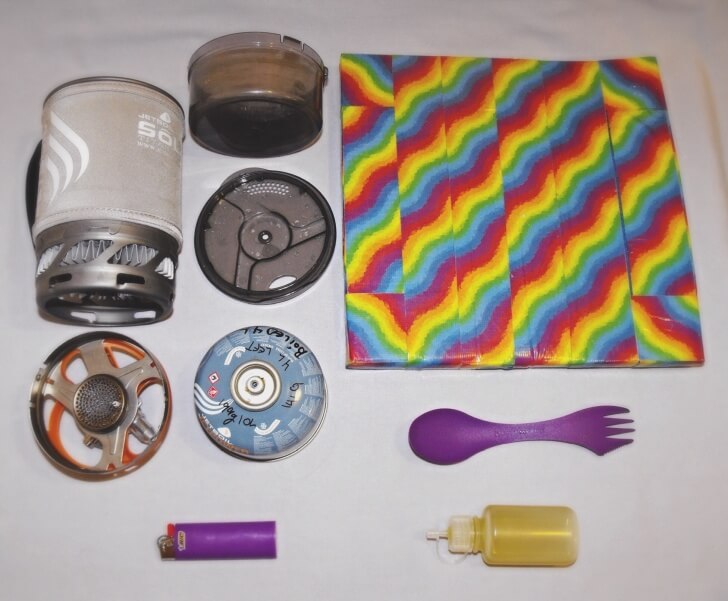Introduction
Food: a backpacker’s best friend. I’ve never met a backpacker who didn’t know the psychological value of a hot meal after a grueling day. When the trail gets tough, backpackers bring out food. Commercial trail food is often scantily portioned, expensive, and flavorless. Custom trail food, on the other hand, can be vegan, diabetic, vegetarian, or “manly,” while staying affordable, delicious, lightweight, and tailored to dietary requirements.

Requirements
Preparation:
- Read and follow directions
- Organize food
Necessary Equipment:
- A kitchen
- A dehydrator (or oven)
- Drying trays (or cookie sheets)
- Freezer bags (Ziploc are best)
- A Permanent marker
On-Trail Skills:
- Read and follow directions
- Be patient

On-Trail Equipment:
- Stove (optional)
- Pot to boil water (optional)
- Stirring and eating utensil
- Preferred Food
Homemade trail meals can be simple or complex. Choose food that satisfies cravings and calorie requirements. I keep all my ingredients, trail meals, and trail food in freezer bags or sealed jars in a cardboard “hiker box” in my freezer. When I am getting ready for a trip I pull out the box and make meals or pull whatever ones I have pre-made. I usually make a few trips worth of meals and snacks at a time and keep them in my hiker box until its time to go. Storing food in the freezer keeps it fresher. Meals stay fresh for up to six months.

Making the Meals
Follow these steps for homemade food on the trail.
1) Calculate your calorie consumption.
Compute the number of calories you will need every day and pack corresponding food. Packing too much food wastes weight, space, and requires more effort while being hungry on the trail potentially affects one’s judgment. An average backpacking male, 5’10” and 180 lbs (178 cm and 82 kg), requires about 3500 calories each day while an average female 5’4′ 125 lbs (163 cm and 57 kg,) requires about 2500 calories per day. (The free calorie counter from UnderArmor: myfitnesspal features a food calorie, calorie requirement, and a recipe calculator). Calculate your calorie requirement, count the calories in each food item, bag the correct amount of food for each day separately, and never pack more than an extra day’s worth of food.
2) Make a list of meals you enjoy at home.
Dried, instant and crushed food never tastes like fresh. Familiar meals taste better than bland, expensive, commercial meals. Instant foods like ramen noodles, Minute Rice, stuffing, dried mashed potatoes, and scalloped potatoes improve with additions. With imagination, almost anything can taste great in the backcountry.
Favorite at home meals I’ve converted to lightweight trail food:
- Chili Cheese “Mac”*
- Sun-dried Tomato Tunaghetti*
- Beef Stroganoff with rice and vegetables
- Beef and cheese tortillas
- Rice pudding
- Apple pie
- Shepherd’s pie
- Loaded mashed potatoes
- Strawberry Cashew Wheaties and Oats*
- Pancakes
- Biscuits and gravy
- Pizza
- Jello
- Chocolate pudding
- Mint hot chocolate
Member Exclusive
A Premium or Unlimited Membership* is required to view the rest of this article.
* A Basic Membership is required to view Member Q&A events




Home › Forums › Home-Dried: How to Prepare Your Own Lightweight Backpacking Meals